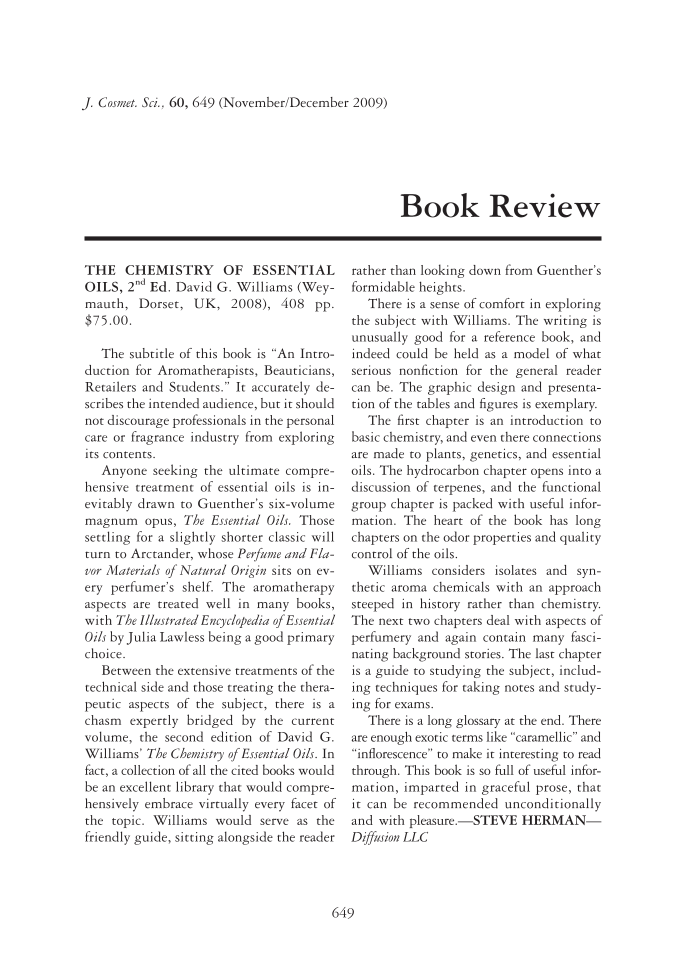J. Cosmet. Sci., 60, 649 (November/December 2009) 649 THE CHEMISTRY OF ESSENTIAL OILS, 2nd Ed. David G. Williams (Wey- mauth, Dorset, UK, 2008), 408 pp. $75.00. The subtitle of this book is “An Intro- duction for Aromatherapists, Beauticians, Retailers and Students.” It accurately de- scribes the intended audience, but it should not discourage professionals in the personal care or fragrance industry from exploring its contents. Anyone seeking the ultimate compre- hensive treatment of essential oils is in- evitably drawn to Guenther’s six-volume magnum opus, The Essential Oils. Those settling for a slightly shorter classic will turn to Arctander, whose Perfume and Fla- vor Materials of Natural Origin sits on ev- ery perfumer’s shelf. The aromatherapy aspects are treated well in many books, with The Illustrated Encyclopedia of Essential Oils by Julia Lawless being a good primary choice. Between the extensive treatments of the technical side and those treating the thera- peutic aspects of the subject, there is a chasm expertly bridged by the current volume, the second edition of David G. Williams’ The Chemistry of Essential Oils. In fact, a collection of all the cited books would be an excellent library that would compre- hensively embrace virtually every facet of the topic. Williams would serve as the friendly guide, sitting alongside the reader rather than looking down from Guenther’s formidable heights. There is a sense of comfort in exploring the subject with Williams. The writing is unusually good for a reference book, and indeed could be held as a model of what serious nonfi ction for the general reader can be. The graphic design and presenta- tion of the tables and fi gures is exemplary. The fi rst chapter is an introduction to basic chemistry, and even there connections are made to plants, genetics, and essential oils. The hydrocarbon chapter opens into a discussion of terpenes, and the functional group chapter is packed with useful infor- mation. The heart of the book has long chapters on the odor properties and quality control of the oils. Williams considers isolates and syn- thetic aroma chemicals with an approach steeped in history rather than chemistry. The next two chapters deal with aspects of perfumery and again contain many fasci- nating background stories. The last chapter is a guide to studying the subject, includ- ing techniques for taking notes and study- ing for exams. There is a long glossary at the end. There are enough exotic terms like “caramellic” and “infl orescence” to make it interesting to read through. This book is so full of useful infor- mation, imparted in graceful prose, that it can be recommended unconditionally and with pleasure.—STEVE HERMAN— Diffusion LLC Book Review
Purchased for the exclusive use of nofirst nolast (unknown) From: SCC Media Library & Resource Center (library.scconline.org)

































































































